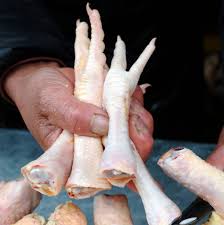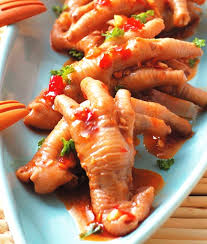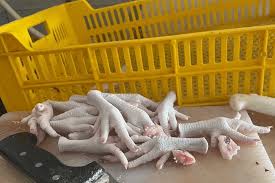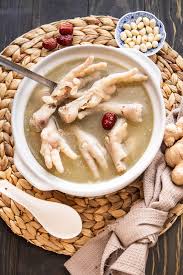Logistics and Maritime Transportation Challenges of Exporting Iranian Chicken Feet to China
The roots of this issue can be summarized into two main challenges
-
Sanctions barriers
-
Health and organizational requirements
In the following, we will review these challenges and potential solutions

Main Challenge 1: Logistics Barriers and Sanctions
Iran’s maritime transportation system faces numerous external obstacles that directly affect the export of goods such as chicken feet:
-
International Sanctions:
Iran’s shipping fleet is under comprehensive sanctions imposed by the U.S., the European Union, the U.K., and even New Zealand. These sanctions have made access to modern maritime technologies, international insurance services, and ship maintenance highly restricted.
-
Rising Operational Costs:
Reports indicate that these restrictions have increased operational costs for Iran’s shipping sector by 30–40%. This directly impacts the final export price of goods, including chicken feet.
-
Restrictions on Maritime Traffic:
Iranian vessels face limitations in docking at major European and Asian ports, which restricts trade routes and available transportation options

Main Challenge 2: Health and Customs Requirements
Crossing customs borders and obtaining the required permits has itself become a logistical challenge:
-
Mandatory Health Permits:
China officially requires a “Sanitary Agreement” between the two countries for the direct import of chicken feet. This includes documentation approved by the World Organisation for Animal Health (WOAH), confirming that Iran is free from highly pathogenic avian influenza.
-
Requirement for the “IR Code”:
Production units and slaughterhouses in Iran must obtain an “IR Code” in order to export animal products. This code, issued by the Iranian Veterinary Organization, certifies compliance with all health and safety standards. Without this code, clearance of goods from Iranian customs is impossible

Potential Solutions to Overcome Challenges
Although these challenges seem complex, there are ways to bypass or mitigate them:
-
Logistics Solutions:
-
Using Alternative Corridors and Shadow Shipping:
Due to restrictions on direct transport, one common solution is to ship consignments to third countries (such as Vietnam or Hong Kong) and then forward them to China. While this increases costs and travel time, it remains a practical solution under current circumstances.
-
-
Administrative Solutions:
-
Coordination with Regulatory Authorities:
Continuous follow-up with the Iranian Veterinary Organization to finalize sanitary protocols with Chinese authorities is crucial. Recent news from joint video conferences between officials of the two countries indicates progress in this direction.
-
-
Quality and Value-Added Solutions:
-
Investing in further processing of chicken feet (such as full nail removal and professional packaging in line with international standards) not only allows for higher pricing but also facilitates obtaining sanitary approvals.
-
Conclusion

The logistics and maritime transportation challenges of exporting chicken feet to China are a combination of political–sanctions restrictions and technical–health requirements. However, with the right strategies—including the use of indirect trade routes, strict adherence to the highest quality standards, and diplomatic efforts to resolve health-related barriers—it is possible to overcome these issues and benefit from the vast export potential of this product, estimated at up to 50,000 tons per year.
We hope this information has been useful.
Undoubtedly, leveraging the expertise and capabilities of reputable and experienced trading companies in the field of chicken feet export can greatly facilitate business for traders.
NONADSHOP International Trading Group
With this expertise and awareness of current challenges, we are ready to provide our capabilities to domestic traders and international buyers.
For consultation and joint cooperation, stay connected with us.
NONAD







بدون دیدگاه